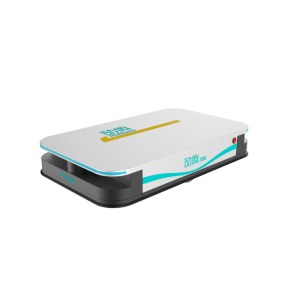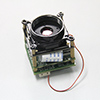AMR refers to autonomous mobile robots, in a broad sense it refers to mobile robots with strong autonomy. Mobile robots with weak autonomy (such as remote control robots, mobile robots walking along rails, etc.) cannot be called AMR, only AMR automated mobile robot with strong AMR autonomous that can make their own reasonable responses to various dynamic changes in the environment can be called AMR.
No complicated programming is required, and autonomous mobile tasks can be completed with the help of a complete upper-level system. The open interface can be used in different scenarios to match changes in different manufacturing production lines, or production units and process requirements.
Although e-commerce has greatly promoted the development of AGV, the main application field of AGV is still manufacturing. No smart factory can do without AMR mobile robot. Large unmanned factories and light-off factories must all have AMR autonomous mobile robot. Small, scattered and scattered small manufacturing workshops can also see the use of AMR automated mobile robot. Therefore, no matter what kind of manufacturing and production environment, as long as there is a place for autonomous material handling, are inseparable from the AMR robot. Inquiry AMR robot cost from top autonomous mobile robots companies/mobile robot manufactures.
Automatic Mobile Robot FAQs
AGV vs AMR
Both AGV and AMR can realize material transportation, but their similarities only stop there. The difference between AMR and AGV is that the former has powerful computing capabilities, and it can sense the surrounding environment through sensors and make corresponding decisions;the latter is just a large actuator, and every move depends on the scheduling of the central control system.
The difference in path planning
The AGV's in-vehicle intelligence is extremely low and can only obey simple programming instructions. According to the AGV trolley working environment, the path planning model is generally divided into two types: one is the global path planning based on the model, and all the information of the operating environment is known, also known as static or offline path planning. Automatic mobile robot like LiDAR SLAM Double Differential Wheels Automated Mobile Robot is sensor-based local path planning, where all or part of the operating environment information is unknown, also known as dynamic or online path planning.
The difference in application scenarios
Among them, the AGV is relatively simple in the implementation of this application. It is limited to following a fixed factory route fixed on the ground. During the entire service life of the AGV, it can only perform the same transportation tasks. If you need to change the route, you need to reset it. LiDAR SLAM Omnidirectional Steering Wheels Autonomous Mobile Robots only needs simple software adjustments to change tasks. SLAM ROBOT can meet the ever-changing environment, production requirements and task execution priority settings. Once a new task is formulated, employees do not need to spend extra time coordinating robots, but focus more on high value-added work, and the entire application process will be more flexible and flexible.
Difference in environmental requirements
For the warehouse of bad conditions with serious ground subsidence, unevenness, and even cracks. Such a warehouse can't use AGV at all, but AMR can, because it has good obstacle crossing ability and adaptability.
How much does AMR autonomous cost?
The AMR robot cost is different among manufacturers. This is mainly because each manufacturer has different technical strengths, different parts and different performances. For example, AGVs that use imported core parts must be more expensive to use domestically-made core parts. After all, the cost will be a big difference.
What's the design of AMR autonomous?
The warehousing AMR automated mobile robot can be specially designed according to the needs of many users. The small body contains powerful capabilities; not only has the three functions of latent, lifting and carrying, the basic load can reach 100KG, which is widely used in the handling work of the workshop production line warehouse.
AMR Warehouse
The AMR intelligent bots warehouse systems can efficiently complete high-intensity picking work. The "goods to people" picking mode replaces the traditional "people looking for goods" picking, which greatly saves manual labor and improves the efficiency of robot warehouse picking. For example, in the modern logistics center of an electric company, after the system automatically transmits the sorting task, the AMR automated mobile robot selects the product type for sorting and packaging by itself, finds the shelf where the product it needs through the optimal route, thereby improving the sorting efficiency. Multiway is one of the most professional autonomous mobile robots companies, inquiry AMR robot cost.
In addition to realizing "goods-to-person" picking, AMR warehouse automation has many new autonomous mobile applications in warehousing systems, such as the provision of wheeled mobile robots on fixed pallet stretch packaging equipment, so that there is no need to install pallet transmission belts, which significantly improves the safety of the factory. To reduce labor costs, AMR automatic mobile robot are fully intelligently managed, thereby improving the level of intelligent management and effectively avoiding damage caused by human factors.
In traditional warehouses, 60%-70% of the time is wasted on manual pick-up. The application of mobile collaborative manipulator robots in the storage system has escaped and freed workers from ineffective and tedious labor in tangible improvements. The work efficiency is improved since the AMR autonomous mobile robot can be automatically charged, it can work 24 hours a day, which cannot be replaced by humans.
Localisation : building C, jingchengda Industrial Park, science and technology 4th Road, Langxin community, Shiyan street, Bao'an District, Shenzhen, 518108 Langxin ,
Personne à contacter : Robotics mwr, 0755 29985090







